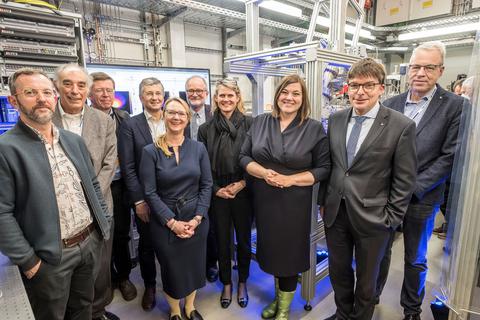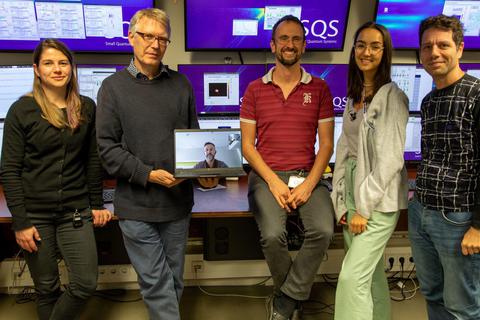
Scientific Instrument SXP
Stay tuned to the latest developments at the SXP instrument!
Conceived as an open soft x-ray port, the SXP instrument aims at complementing the scientific scope of the other two, already operating baseline instruments at the SASE 3 soft x-ray undulator focusing on atomic, molecular and non-linear optical (SQS) as well as condensed matter physics (SCS). The main driving force behind SXP originates from the time-resolved X-ray photoelectron spectroscopy community contemplating key questions in the dynamics of materials science at surfaces and interfaces. Nonetheless, proposals to investigate high-valent metal intermediates in biological and inorganic catalysts for chemical bond activation by means of fluorescence spectroscopy as well as research on highly charged ions in the light of astrophysics are also pursued. The outstanding capabilities of the European XFEL pave the way for ultrafast pump-probe investigations at the SXP instrument combining intense and tunable soft X-rays with versatile optical laser capabilities, which are provided by two synchronized femtosecond laser systems, whose wavelength ranges can be extended into the infrared as well as extreme ultraviolet region. For more information check out our homepage, in particular our instrument section, and do not hesitate to contact us via sxp@xfel.eu.
If you are interested in becoming a user of the SXP instrument or receive information about the status of the project, please subscribe to the SXP user’s mailing list. To subscribe send an email to sympa@xfel.eu with the subject: subscribe sxp.users YourFirstName, YourName
|
X-ray Photon Beam Parameters |
As of second half of 2023 |
|---|---|
|
Photon energy |
0.5 - 3.0 keV, fully tunable |
|
Pulse energy |
up to 10 mJ (depends on photon energy) |
|
Focus size |
down to 30 μm, variable |
|
Pulse duration |
10-25 fs (in normal operation) |
|
Bandwidth |
~1% in SASE mode or monochromatized (resolution: 5000 in 1st order) |
|
Number of pulses per train |
variable, for example: 400 at 2.2 MHz 200 at 1.1 MHz 100 at 0.5 MHz 20 at 0.1 MHz |
|
Special mode*: two-color operation |
Includes a variable time delay between 0 and 1000 fs using a magnetic chicane. (The optical chicane for scanning to negative delays is not yet available.) |
|
Special mode*: short pulses (<10 fs) |
Short pulses can be achieved either by special tapering of the undulators or by reducing the electron bunch charge. The latter requires a sufficient number of experiments at several instruments. Timing-diagnostics are only partially available. |
